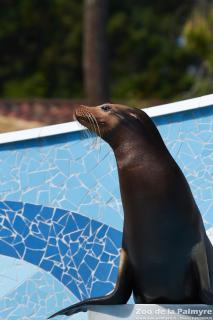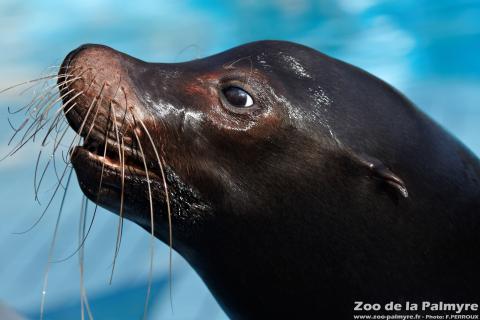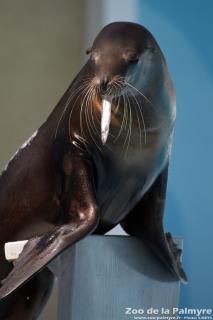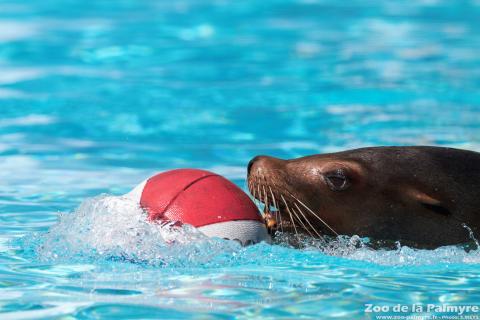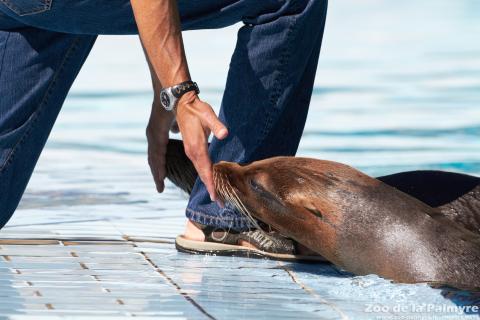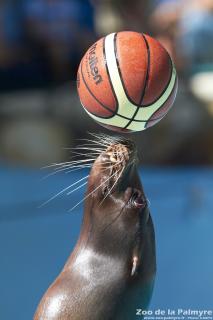California Sea Lion

California Sea Lion

-
Class
Mammalia -
Order
Carnivora -
Familly
Otaridae
-
 ♂ 2.2m, ♀ 1.8m
♂ 2.2m, ♀ 1.8m -
 ♂ 300kg+, ♀ 90kg
♂ 300kg+, ♀ 90kg -
 11 months
11 months -
 1
1 -
 15–20 years in the wild
15–20 years in the wild
-
Diet
fish (anchovies, mackerel...), squid -
Habitat
islands and coastal zones -
Range
west coasts of Canada, the USA and Mexico
-
 This species is part of a European Breeding Program
This species is part of a European Breeding Program
-
Population in the wild
En augmentation -
IUCN REDLIST status

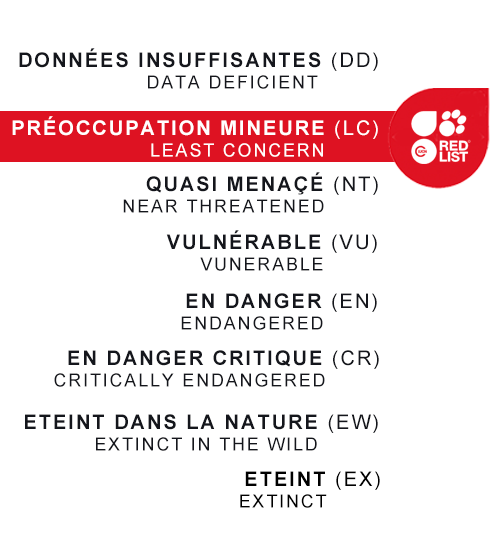
Otaridae comes from the Greek ôtarion, meaning ‘little ear’.
During the breeding season (May to August), male California Sea Lions become aggressive. They mark their territory by barking incessantly and by ritual intimidation displays. Resident males react quickly to intrusions. Confrontations are violent and can result in serious although rarely fatal injuries. There is one dominant male per territory, reigning over about 15 females who can move from one territory to another – males do not make any attempt to stop them.
These marine mammals are wholly adapted to life in the water: they can dive to a depth of 250m (although they rarely descend more than 70m as this is the depth where they find the fish they eat), go without breathing for more than 10 minutes (although the average dive length is rarely more than 3 minutes) and swim at more than 20km/h by using their front fins to propel themselves and their back ones as a rudder.
Sea Lions eat more than 50 species of fish and cephalopod (squid, octopuses, anchovies, herrings). They consume 7–18kg of food a day.
Sea Lions were intensively hunted for their fur, fat and meat in the 19th and early 20th centuries, and also to reduce their impact on fishing. Since the second half of the 20th century, California Sea Lions have been fully protected, which has allowed their numbers to recover. Hunting is banned in Canada, the USA and Mexico. Their numbers are estimated at around 350,000, and though certain populations are declining, others have reached their maximum capacity, meaning that their environment would struggle to support any more animals (this is particularly the case in California). They still sometimes come into conflict with fishermen after attacking their nets or salmon that are about to spawn. Sea Lions are also victims of pollution, diseases and being strangled by or swallowing marine detritus.
Although they are part of the same order, Sea Lions are different from Seals. They have external ear flaps, whereas Seals only have only holes. Sea Lions can also fold their fins under their body and ‘walk’, where Seals can only crawl on land because of their very short limbs.

